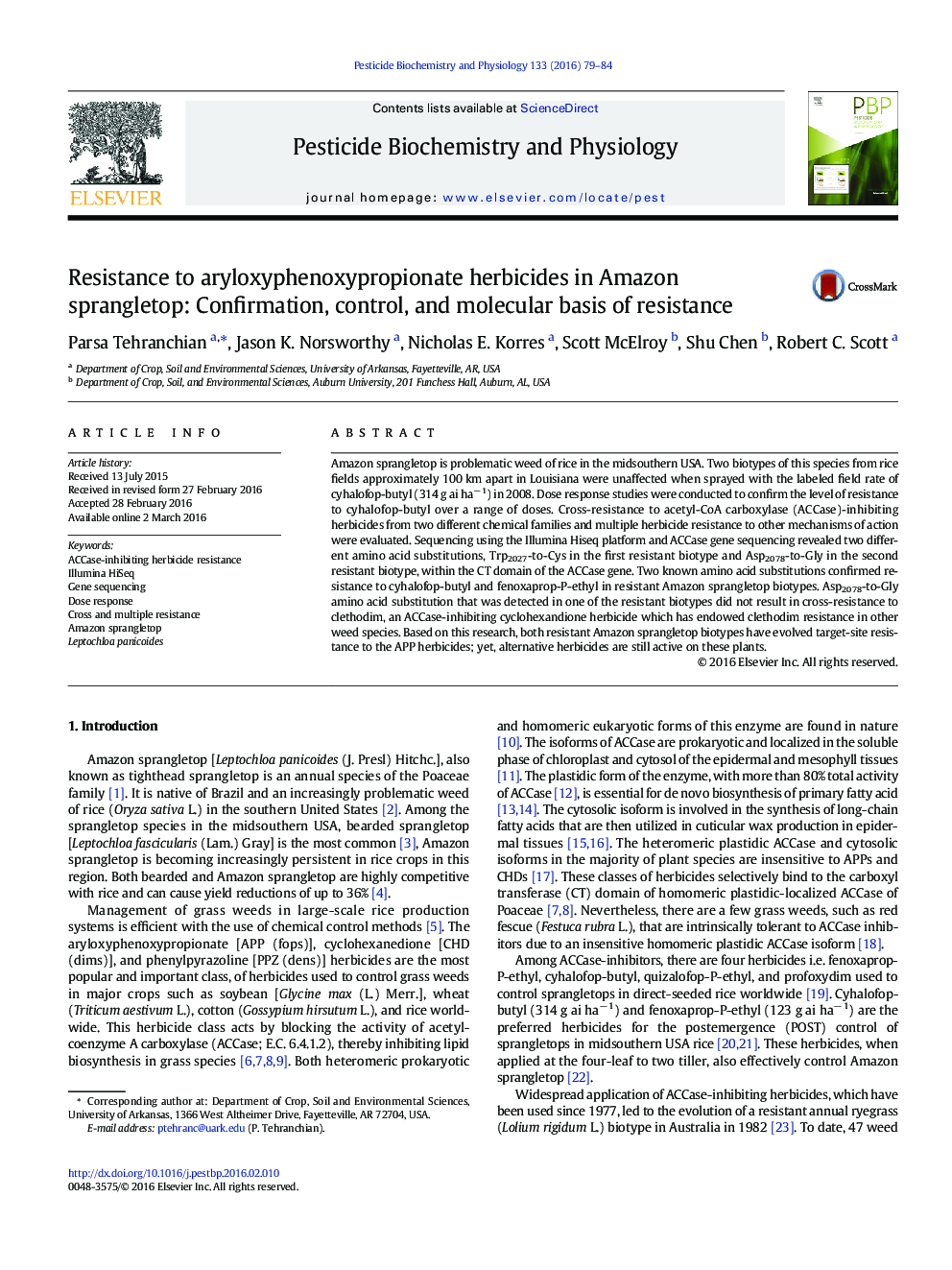| Article ID | Journal | Published Year | Pages | File Type |
|---|---|---|---|---|
| 5514912 | Pesticide Biochemistry and Physiology | 2016 | 6 Pages |
â¢Two Amazon sprangletop biotypes in Louisiana were resistant to cyhalofop-butyl.â¢Both biotypes were cross-resistant to aryloxyphenoxypropionate herbicides.â¢Trp2027-to-Cys and Asp2078-to-Gly amino acid substitutions within the ACCase gene were the mechanism of cyhalofop-butyl resistance in Amazon sprangletop.
Amazon sprangletop is problematic weed of rice in the midsouthern USA. Two biotypes of this species from rice fields approximately 100 km apart in Louisiana were unaffected when sprayed with the labeled field rate of cyhalofop-butyl (314 g ai haâ 1) in 2008. Dose response studies were conducted to confirm the level of resistance to cyhalofop-butyl over a range of doses. Cross-resistance to acetyl-CoA carboxylase (ACCase)-inhibiting herbicides from two different chemical families and multiple herbicide resistance to other mechanisms of action were evaluated. Sequencing using the Illumina Hiseq platform and ACCase gene sequencing revealed two different amino acid substitutions, Trp2027-to-Cys in the first resistant biotype and Asp2078-to-Gly in the second resistant biotype, within the CT domain of the ACCase gene. Two known amino acid substitutions confirmed resistance to cyhalofop-butyl and fenoxaprop-P-ethyl in resistant Amazon sprangletop biotypes. Asp2078-to-Gly amino acid substitution that was detected in one of the resistant biotypes did not result in cross-resistance to clethodim, an ACCase-inhibiting cyclohexandione herbicide which has endowed clethodim resistance in other weed species. Based on this research, both resistant Amazon sprangletop biotypes have evolved target-site resistance to the APP herbicides; yet, alternative herbicides are still active on these plants.
Graphical abstractDownload full-size image
